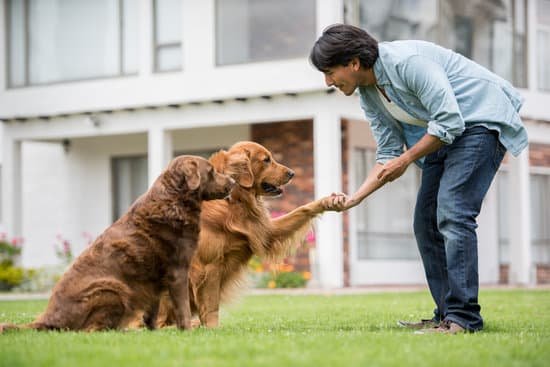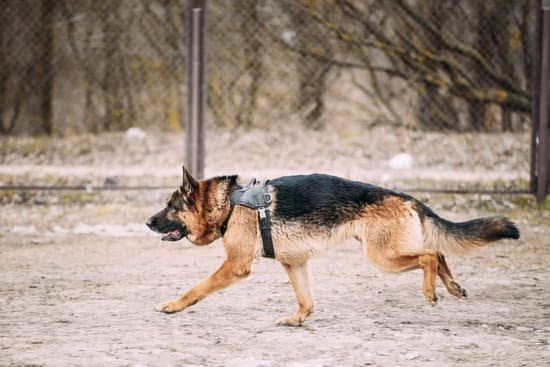Are you considering a career as a dog groomer and wondering how long it takes to become one? The process of training as a dog groomer involves understanding the role and importance of proper grooming for a dog’s health and well-being, finding the right training program, curriculum and skills development, duration of training, certification and licensing, apprenticeships and on-the-job training, continuing education and specialization, and transitioning into the field.
Understanding the role of a dog groomer goes beyond simply trimming fur and clipping nails. It involves promoting the overall health and well-being of dogs through proper grooming practices. Whether it’s for hygiene purposes or to enhance a dog’s appearance, professional grooming plays an essential role in maintaining a pet’s health.
Once you’ve recognized the significance of the role, finding the right training program becomes crucial. Researching accredited dog grooming schools and programs is essential in setting a solid foundation for your career. Different options such as online vs. in-person training should be carefully considered based on your learning preferences and schedule availability. Finally, with hands-on experience during practical skills development, you will gain valuable insight into mastering the art of dog grooming.
Finding the Right Training Program
When it comes to pursuing a career as a dog groomer, finding the right training program is essential for gaining the necessary skills and knowledge to excel in this field. Whether you choose to attend an accredited grooming school or opt for an online training program, there are several factors to consider when making this important decision.
- Researching Accredited Dog Grooming Schools: It’s crucial to research and explore various accredited dog grooming schools to ensure that the program meets industry standards and requirements. Look for schools that offer comprehensive curriculum, experienced instructors, and opportunities for hands-on training.
- Online vs. In-Person Training Options: Consider whether you prefer the flexibility of online learning or the immersive experience of in-person training. Online programs may offer convenience, while in-person training provides direct interaction with instructors and practical grooming experience.
When evaluating potential training programs, it’s important to carefully consider the curriculum and skills development offered by each option. A comprehensive dog grooming program should cover a wide range of topics, including breed-specific grooming techniques, handling different coat types, nail trimming, ear cleaning, and safety protocols.
Once you have chosen a suitable training program, it’s time to dive into your studies and practical skills development with dedication and enthusiasm. Finding the right training program sets the foundation for your future success as a dog groomer.
By thoroughly researching your options and selecting a reputable program that aligns with your career goals, you can set yourself on the path towards becoming a skilled and knowledgeable professional in the field of dog grooming.
Curriculum and Skills Development
When considering a career as a dog groomer, understanding the curriculum and skills development involved in training is crucial. A typical dog grooming program covers a wide range of topics, including breed recognition, coat types, proper handling techniques, safety protocols, bathing and drying methods, nail trimming, ear cleaning, and styling techniques such as clipping and scissoring.
Additionally, aspiring groomers will also learn about skin and coat conditions, parasite detection and prevention, as well as customer service skills for working with pet owners.
In addition to classroom instruction, hands-on experience is a vital component of skills development in dog grooming training. Practical application of grooming techniques under the supervision of experienced instructors allows students to hone their proficiency in handling different breeds and temperaments. This real-world experience provides the opportunity to develop the dexterity and attention to detail necessary for successful grooming.
The duration of the skills development portion of the training process can vary depending on the specific program. Some schools offer comprehensive programs that can be completed in 6-8 weeks on an intensive full-time schedule, while others may have part-time options that span several months. Factors such as course structure (online vs. in-person), individual learning pace, and additional practical experience through internships or apprenticeships can also influence the overall length of time needed for skills development.
| Topic | Details |
|---|---|
| Topics Covered | Breed recognition, coat types, handling techniques, safety protocols |
| Hands-On Experience | Practical application under supervision for dexterity and skill development |
| Duration | Program lengths range from 6-8 weeks for intensive full-time schedules or several months for part-time options |
Duration of Training
When considering a career as a dog groomer, one important factor to keep in mind is the duration of the training process. The length of time it takes to become a certified dog groomer can vary depending on several factors, including the type of program and individual circumstances.
Exploring Program Length
Dog grooming training programs can range from a few weeks to several months in length. Some programs may offer intensive, full-time training schedules, while others may have part-time or online options for those with other commitments. It’s essential to research and compare the different program lengths available to find one that fits your schedule and learning style.
Factors Affecting Training Duration
The duration of your training as a dog groomer can be influenced by various factors such as your prior experience with handling animals, your ability to grasp grooming techniques, and the specific curriculum of the program you choose. Additionally, some students may choose to pursue additional certifications or specializations within the field, which can extend the overall training timeline.
Planning for Success
It’s crucial to create a plan that aligns with your goals and lifestyle when embarking on a dog grooming training program. Consider factors such as financial support, ability to commit to full-time studies versus part-time options, and any potential career paths you wish to pursue after completing your training. By carefully considering these factors and understanding the various aspects of dog grooming education, you can ensure that you are adequately prepared for success in this rewarding field.
Certification and Licensing
Becoming a certified dog groomer is an essential step in establishing credibility and trust within the industry. While certification is not always a legal requirement, many employers and clients prefer to work with groomers who have completed a formal training program and obtained certification. The process of becoming certified typically involves completing a dog grooming course from an accredited school or program, gaining practical experience, and passing a certification exam.
In addition to certification, some regions may require dog groomers to obtain specific licenses in order to legally operate their own grooming business or work in certain facilities, such as veterinary clinics. The requirements for licensing can vary depending on the state or country, so it’s important for aspiring groomers to research the regulations and guidelines in their area. This may involve fulfilling certain educational requirements, gaining hands-on experience, and submitting an application to the appropriate licensing board.
Obtaining certification and licensing demonstrates a commitment to professionalism and ongoing education within the dog grooming industry. It can also open up more opportunities for employment and career advancement. Additionally, maintaining active certifications often requires continuing education to stay updated on the latest grooming techniques, equipment, and safety protocols.
| Certification | Licensing |
|---|---|
| Becoming certified demonstrates professionalism | Some regions require specific licenses |
| Preferred by employers and clients | Licensing requirements vary by location |
Apprenticeships and on-the-Job Training
The Benefits of Gaining Real-World Experience
One of the most valuable options for aspiring dog groomers is gaining real-world experience through apprenticeships and on-the-job training. This type of hands-on learning allows individuals to apply the skills and knowledge acquired during their formal training in a practical setting. Working alongside experienced groomers provides invaluable insights into the day-to-day responsibilities of the profession, as well as the opportunity to observe different grooming techniques and styles.
Finding Opportunities for on-the-Job Training
Finding opportunities for on-the-job training with experienced groomers can be achieved through various channels. Many grooming salons, veterinary clinics, and pet care facilities offer apprentice or assistant positions for individuals looking to gain practical experience. Networking within the industry can also lead to mentorship opportunities, as established professionals may be willing to take on eager learners.
Maximizing Learning Through Apprenticeships
Apprenticeships allow individuals to learn from seasoned professionals while actively participating in grooming tasks under supervision. This direct mentorship not only facilitates skill development but also provides insight into client interactions, business operations, and maintaining a safe and hygienic work environment. By actively engaging in apprenticeship programs, aspiring dog groomers can maximize their learning and prepare themselves for a successful transition into the field upon completion of their training program.
Continuing Education and Specialization
After completing a dog grooming program and gaining some experience in the field, many individuals may choose to pursue advanced training and specialization to further enhance their skills and knowledge. There are several options available for groomers who want to continue their education and focus on specific areas within the field of dog grooming.
Some potential areas of specialization for dog groomers include:
- Advanced styling techniques for different dog breeds
- Specialized grooming services such as hand-stripping or Asian fusion grooming
- Grooming for show dogs and competition preparation
- Specialized care for senior dogs or those with special needs
Continuing education can take the form of additional coursework, workshops, or seminars focused on these specific areas. Many professional organizations and grooming schools offer advanced training programs tailored to groomers looking to expand their expertise. By pursuing specialization in certain aspects of dog grooming, professionals can set themselves apart in the industry and attract clients seeking specialized services for their pets.
Staying current with industry trends and best practices is crucial for any dog groomer looking to build a successful career. By continuously seeking opportunities for continuing education and skill development, groomers can ensure that they are providing the highest quality care for the dogs entrusted to them, while also expanding their business opportunities.
Transitioning Into the Field
In conclusion, becoming a dog groomer requires dedication, training, and a passion for working with animals. The transition from training to a career in dog grooming can be an exciting and rewarding process. It is important to stay up-to-date with industry trends and best practices, as well as seek out opportunities for advanced training and specialization within the field of dog grooming.
After completing a dog grooming program and obtaining the necessary certifications and licenses, individuals can explore various career paths within the industry. Some may choose to work in a veterinary clinic or animal shelter, while others may opt to open their own grooming business. Regardless of the career path chosen, ongoing education and skill development are crucial for long-term success as a dog groomer.
Overall, the demand for professional dog groomers continues to grow, making it an appealing field for those who have a genuine love for animals. By following the necessary steps outlined in this article, individuals can successfully transition from training to a fulfilling career in dog grooming. With dedication and hard work, aspiring dog groomers can make a positive impact on the health and well-being of countless furry companions.
Frequently Asked Questions
How Long Does It Take to Learn How Do You Groom a Dog?
The time it takes to learn how to groom a dog can vary depending on the individual and the training program. Some dog grooming courses may take several weeks to complete, while others may take months. It also depends on how much experience and skill one wants to acquire in dog grooming, as advanced techniques can take longer to master.
Is It Hard Being a Dog Groomer?
Being a dog groomer can be challenging, but whether or not it is hard depends on the individual’s love for animals, their patience, and their ability to handle different temperaments and behaviors displayed by dogs. Physical stamina is also important as grooming can be physically demanding work.
Additionally, being a dog groomer involves dealing with sharp tools and potentially anxious or agitated animals, so it requires attentiveness and caution.
What Is the Hardest Part of Being a Dog Groomer?
The hardest part of being a dog groomer may vary from person to person, but some common challenges include handling difficult or uncooperative dogs safely and efficiently. This might involve calming nervous animals or dealing with dogs that are aggressive or fearful during the grooming process.
Additionally, the physical demands of lifting and restraining larger dogs for grooming tasks can also be taxing on the body over time. Patience, understanding animal behavior, and good communication skills are key in overcoming these challenges as a dog groomer.

Welcome to the blog! I am a professional dog trainer and have been working with dogs for many years. In this blog, I will be discussing various topics related to dog training, including tips, tricks, and advice. I hope you find this information helpful and informative. Thanks for reading!





